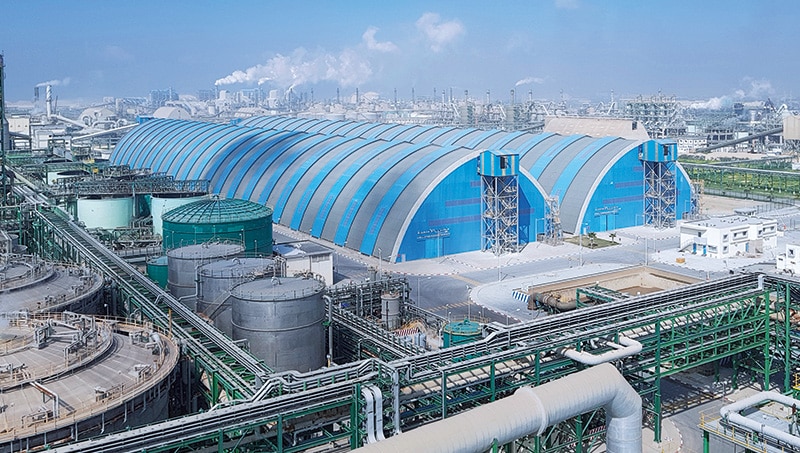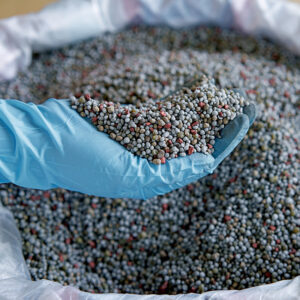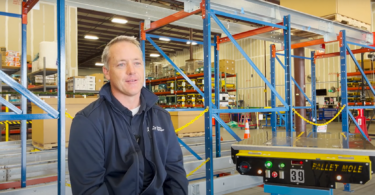One of the World’s Largest Fertilizer Manufacturers is reducing process costs thanks to SICK
The world’s population is growing, but the space available for agricultural land is limited. As a result, huge quantities of fertilizer are used all over the world to increase yields. Producing fertilizer, however, is an energy-intensive process that requires monitoring. One of the world’s largest fertilizer manufacturers has chosen to use gas and dust measuring technology from SICK. With the MCS300P HW process gas analyzer, the GM series of in-situ gas analyzers, the DUSTHUNTER dust measuring devices, and an extensive range of services from a single source, SICK proved to be the best choice. In total, over 100 analyzers will be installed in the existing plants. As a special solution, SICK developed a self-cleaning in-situ measuring probe for reliable gas measurement in environments with wet dusts where they will be able to use the processing of phosphate rock to improve their processes.
The Problem
The customer is a leading global manufacturer of phosphoric acid, various phosphate fertilizers, special fertilizers, and feed additives. Phosphate is one of the main nutrients for plants and one of the key components of most chemical fertilizers. It is generally obtained from phosphate ore, which is converted into phosphoric acid with the aid of sulfuric acid. The phosphoric acid is then turned into phosphate fertilizer using ammonia. The customer possesses large deposits of phosphate rock and produces some of the starting products, such as sulfuric acid, in-house.
However, the measuring technology used until recently was not always able to live up to expectations. As new production lines were added and local regulations demanded additional measurements, the partially internal Engineering Procurement Construction (EPC) realized it needed a new supplier. Specifically, the company needed a solution for monitoring gas and dust emissions during the processing of phosphate rock and the production of sulfuric acid and phosphoric acid. Furthermore, it also had to be capable of monitoring processes during the manufacture of mono- and diammonium phosphate (MAP/DAP). The customer’s key requirements were greater plant safety, fewer failures, lower operating costs, and access to real-time production data, therefore the order was divided into four sub-projects.
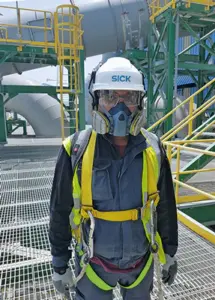 The Process
The Process
SICK already had tried and tested products available that were ideal for the task at hand. Regarding to the processing of phosphate rock, the company needed a product to monitor SO2, NOx, CO, and CO2 as well as dust loads at the outlet of the rotary kilns. In this particular case, the solution had to be able to provide reliable and accurate measurements even in the presence of fine dusts. SICK provided the GM32 in-situ gas analyzers for SO2 and NOx, the GM35 for CO and CO2, and the DUSTHUNTER SP100. The chosen solution provides several benefits, such as reliable in-situ measuring technology and excellent value for money.
In the case of sulfuric acid production, the solution had to be able to monitor SO2 and O2 emissions from the stack. For this case, the best choice was the MCS300P HW multi-component analyzer system, as it requires significantly less maintenance due to its hot/wet extractive measuring technology, eliminating the complicated process of sample preparation.
As phosphate rock contains fluoride, HF is released during the production of phosphoric acid and is washed out in the wet scrubber. To monitor the performance of the scrubber, HF levels need to be measured on the stack. This task was taken on by the GM700 laser gas analyzer, which has a proven track record in the measurement of aggressive and corrosive HF.
Low NH3 concentrations also need to be measured during the production of mono- and diammonium phosphate (MAP/ DAP) from phosphoric acid and ammonia to monitor the efficiency of the wet scrubbers. At the same time, the HF emissions from the stack need to be monitored as well, as they provide information about the fluoride content and, hence, the quality of the final fertilizer product. Finally, the dust emissions also must be measured.
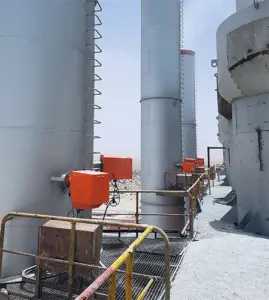 The Next Steps
The Next Steps
These tasks proved to be a major challenge, as the humid, aggressive, and dusty process media made it very difficult to take continuous measurements. The chosen solution in this case was the GM700 in-situ gas analyzer combined with the FWE200 extractive dust measuring device. SICK developed a special measuring probe for the GM700 which cleans itself periodically. The solution can withstand the high levels of salt formation in the stack without any problems and significantly reduces the amount of maintenance work required. As a result of the continuous monitoring, the excess ammonia in the process can also be cut considerably. The final step was to install eight FWE200 dust measuring devices at one of the sites. Preparations are already under way for the installation of further devices at a second site.
Want to learn more about applications like this?



